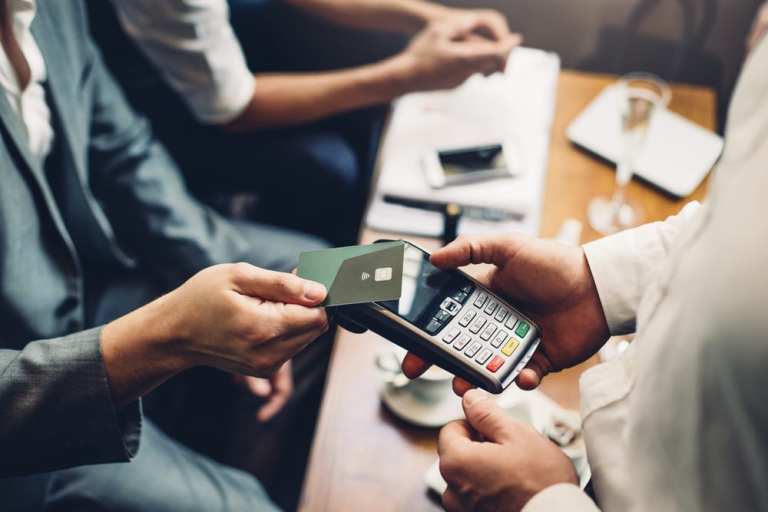
Contactless has yet to catch on in the United States, despite years of promotional efforts and the success of the payment method in the U.K., Australia and Canada. However, there may be an opportunity to get more contactless cards into the hands of consumers — an opportunity that involves community banks and is backed by financial incentives.
That was the message of a recent PYMNTS interview between Karen Webster and Tina Giorgio, president and CEO of ICBA Bancard, the payment services subsidiary of the Independent Community Bankers of America (ICBA). ICBA Bancard’s 1,600 community bank customers have issued more than 7.3 million payment cards, Giorgio said.
The contactless card opportunity for community banks stems from the expiration of first-generation EMV chip cards, she told Webster. In fact, in 2015, ICBA Bancard provided more than $800,000 in financial incentives to help its community bank clients prepare for first-generation EMV. This included offsetting certification costs, subsidizing the cost of EMV plastics and offering incentives to banks that upgraded their merchant terminals to EMV.
Hip Contactless
Consumer advertising campaigns are also noting the benefits of contactless payments, and positioning the product as the hip technology of tomorrow.
“You turn on a sporting event and see commercials for tap-and-pay, or athletes running around buying stuff with” contactless payments, said Giorgio. “Small businesses are becoming more savvy about payments” as well, she noted, adding that many of them are “owned by millennials.”
These entrepreneurs are not only comfortable with the newest payment technology, but are eager to innovate. Besides, newer payment terminal technology makes it easier for businesses to turn on and maintain the contactless payment function.
Even as emerging technologies like mobile wallets and mobile payments continue to grow in their adoption, Giorgio said the use case for contactless cards is particularly compelling for expediting checkout at the point of sale. She noted that, ever since EMV chip cards were introduced in the U.S., consumers have complained about the extra seconds it takes to process transactions.
“Contactless cards are, quite literally, touch and go,” she said.
Financial Incentive
To help community banks continue to innovate in the payments space, ICBA Bancard has negotiated special pricing with FIS, Visa and Mastercard to make contactless card deployment more affordable for smaller banks. In addition, ICBA Bancard is providing educational resources to help explain how the technology works, potential customer use cases and why community banks should position themselves as early adopters.
Contactless cards have long been touted as the next big payments technology, but they have failed to reach critical adoption in the United States. With the expiration of first-generation EMV cards and the need to replace them, the time is ripe to change the way consumers pay at the point of sale.
According to recent comments made to PYMNTS by Daniel Sanford, Visa’s vice president of consumer products and head of global contactless payments, strong consumer demand has emerged for the payment method, especially for small-ticket transactions, while the price of issuing those cards has also decreased.
Let’s break that down a bit. A contactless card costs roughly a dollar more than a “standard chip card,” Giorgio explained. Educational pushes from Visa and Mastercard, along with continuing news of contactless success in foreign markets (Australia stands out in particular), have created a compelling business case for financial institutions to consider rolling out contactless card payments in the United States.
In one sense, the stars seem to be aligning for contactless in ways that were not happening years ago, during the earlier bursts of enthusiasm for the payment technology.
With nearly 70 percent of all U.S. merchants equipped to accept contactless payments at the point of sale, and companies like ICBA Bancard, FIS, Visa and Mastercard offering financial support to usher in mass adoption of this technology, we may be another step closer to bringing contactless to the mass market.